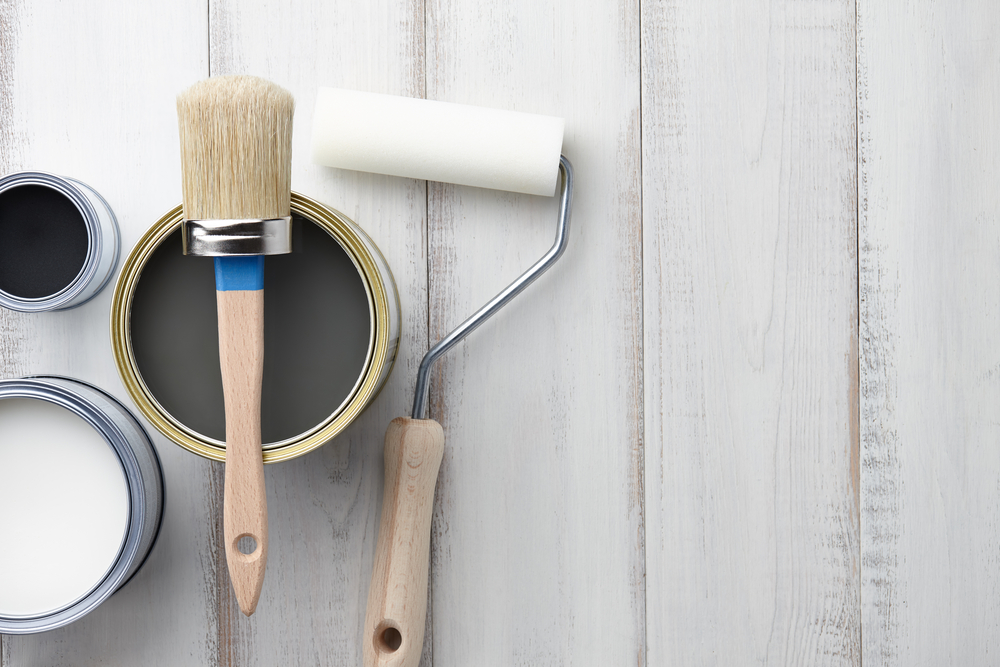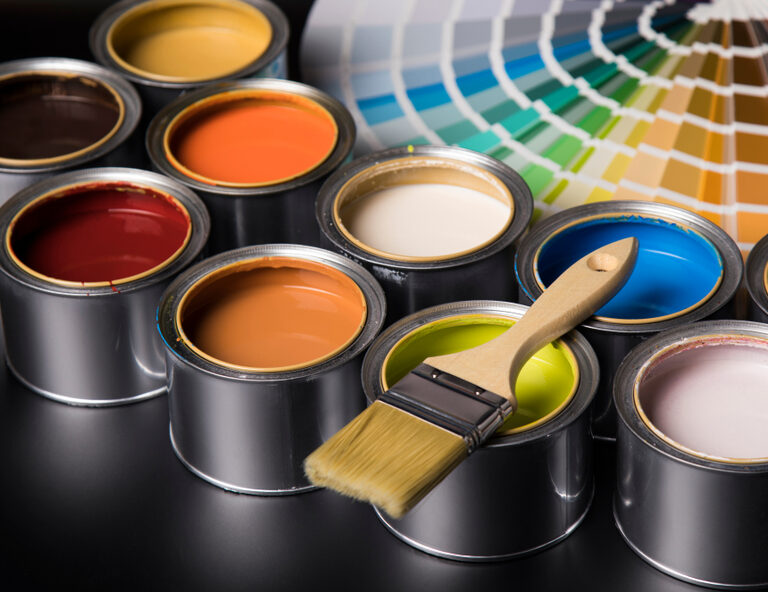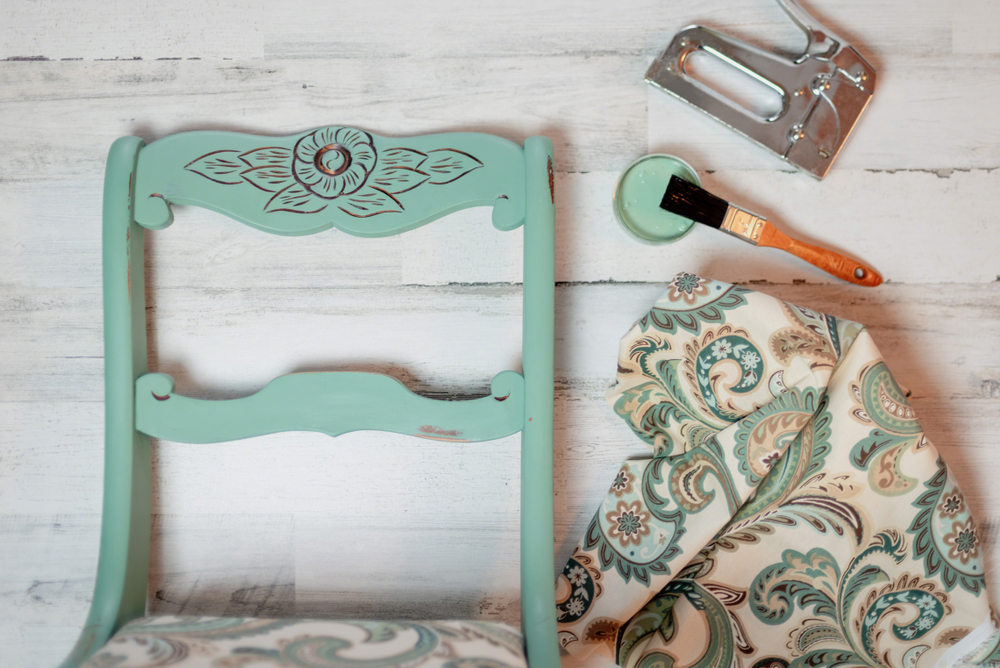So you’re ready to start a new project, and you’ve decided that you want to achieve an old-timey, worn-out look with paint. You’ve done your research and figured out the two best candidates for the kind of look you want: milk paint and chalk paint.
Milk paints and chalk paints are two formulas of the olden days that are slowly coming back to life, thanks to their unique aesthetics.
Both types of paints have similar traits—they both create a gorgeous finish, they both have less smelly odors than conventional paints, and they’re both friendlier to the environment, as well. Sometimes, it can even be hard to distinguish between the two.
That said, there are subtle differences between the two that can mean a world of difference for your project. This article will discuss both types of paint formulas and when you should choose one over the other.
Milk Paint
Milk paint is a type of paint that is made of elements that can be found in nature, such as clay, casein, and lime. Casein is a kind of protein that is found in milk, hence the name. Pigments are also added in order to add color.
History
The term ‘milk paint’ may be new to some people, but it’s actually an ancient recipe that has existed for thousands of years.
There is evidence of cave paintings in Asia dated roughly 8000 years that made use of a primitive form of milk paints. Also called casein paints, this type was popular until the late 1970s, when acrylic paints began to be the paints of choice. It still has its niche today, though.
Appearance
Milk paints have a distinct appearance. Unlike chalk paints, milk paints don’t have a flat look to them. In fact, they have a slight sheen that gives them a lot of depth and dimension.
They can withstand daily wear and tear without any problem. However, they do take on a distressed appearance pretty easily, which is great if you want to achieve a vintage farmhouse look. This doesn’t necessarily mean that the paint is failing, but if you don’t like this style, you can add bonding agents or paint sealers like Mod Podge Sealer to the paint.
Milk paint finishes depend on the surface you’re painting on. The more porous and absorbent it is, the glossier the finish will be.
Application
Milk paints, like Rust-Oleum Milk Paint Finish, come in powder form, which you have to mix with water first before application. Due to this, milk paints are quite customizable. You can control how thin or thick you want the paint to be, and you can also create colors to suit your exact needs.
At the same time, milk paints clump very easily. If you don’t mix it properly, it will likely result in a lumpy consistency that won’t be good for painting. To avoid this kind of issue, you want to use power mixers.
Performance
This type of paint is extremely durable. Thousand-year-old cave paintings are good enough evidence that milk paints can last for a long time. And even if you don’t plan on painting any cave walls anytime soon, milk paint is still quite a durable paint to have.
Also, since milk paints are all-natural, they don’t contain harmful chemicals like VOCs, which can cause health issues. They’re also easily disposable since they don’t have any damaging effects on the environment.
There are several downsides to milk paints, though. The biggest one is the price. Latex and oil-based paints are easier and cheaper to manufacture, driving the price of milk paints upwards. They’re also sold in smaller quantities, which can be a hassle if you undertake a large project.
Another disadvantage of milk paints lies in its main ingredient: milk. Since milk paints use milk protein as their binder, they spoil just as easily as milk. This is why milk paints don’t come pre-mixed. Once they come in contact with water, it will activate the milk proteins, decreasing their shelf life and making them more prone to spoilage.
Usage
Perhaps the most common usage of milk paint is to create distressed finish surfaces, which is particularly useful if you’re trying to achieve a vintage look. Outside of that, you can apply milk paint to most surfaces, including wood, metal, glass, drywall, and plastic.
You don’t need to sand the surface down or apply any kind of primer as well. Just make sure to apply the right amount of coating in the right amount of time.
Pros
- Doesn’t harm the environment
- Durable and long-lasting
- Creates a vintage, distressed finish
- Highly customizable
- Can be applied without sanding or primer needed
Cons
- Pricier compared to regular paints
- Doesn’t come pre-mixed
- Not easy to mix properly
- Shorter shelf life
Chalk Paint
While milk paint and chalk paint may have similar attributes, they couldn’t be more different in other areas.
History
For one, while milk paint has been around for thousands of years, chalk paint is a relatively recent invention.
It was originally released by the eponymous paint brand Annie Sloan in the latter part of the 20th century. The trademarked formula contains calcium carbonate in the paint, which helps the finished product look like chalk.
Today, they’ve gained enough popularity to warrant other brands to release their own variants, such as Rust-Oleum’s Chalked Paints. These similar paints are created by adding plaster of Paris or chalk to standard blends of acrylic paint.
Appearance
Chalk paints look and behave like an ultra-matte version of traditional paint. They have a chalky appearance and feel, earning them their name. If you want a modern rustic or shabby-chic feel to your decor, you should consider going with chalk paints.
Application
Chalk paints are designed to be easier to work with than traditional paints. They come pre-mixed, which means you no longer have to go through the hassle of trying to achieve the perfect mix.
That said, this makes it more difficult to attain an undiluted, unique color. You also always have to factor the volume of the binder into account.
Performance
Chalk paint is a great paint for beginners to use, especially if they’re just getting started in the DIY world. It doesn’t require any complicated preparation, is easy to clean up, and can be used on practically any surface.
Like milk paints, chalk paints are odor-free, quick-drying, and water-soluble. They’re technically not all-natural, but they’re safe to work with and easy to dispose of.
However, they’re not as durable as their soft matte finish can also be easily torn or damaged from abrasions.
Usage
This type of paint is popularly used in furniture design because of the shabby-chic vibe it gives off. The biggest upside is that there’s hardly any preparation needed in terms of sanding or priming the surface to be painted on. It easily adheres to any surface, be it wood, glass, plastic, or metal.
Chalk paints can also be used to create a two-color distress effect, which is done by painting a base color and covering it up with a different color. Then, once the top layer is dry, you can distress it so that the base color shows through.
Pros
- Adheres to almost any surface
- Requires little to no preparation to use
- Creates a modern rustic, shabby-chic vibe
- Water-soluble and quick-drying
- Safe to work with
Cons
- Won’t last under daily wear and tear
- More difficult to create unique colors
Factors to Consider

When choosing between two kinds of paint, you have to take into consideration several factors that will affect how well the products perform for your intended use case.
In this section, we’re going to discuss what those factors are and how to use them to decide which of the two types of paint you should choose.
Appearance
When it comes to paints, appearances are very important, especially if you have a certain theme in mind.
While both milk and chalk paints have a similar matte finish, they do have slight differences. For one, milk paints are a bit glossier. They can also be made to look distressed without sacrificing durability.
Chalk paints, on the other hand, are more suitable for modern themes because their matte finish gives off a very soft, clean look. You can distress them as well, but they don’t hold up as well as milk paints.
Durability
Depending on where and what you want to use the paint on, durability can be a priority.
If you plan to apply the paint on surfaces that don’t get a lot of everyday traffic, such as indoor decorative furniture or lesser-used cabinets, then durability might not be such an issue. However, if you plan to use the paint outdoors or on commonly-used furniture like kitchen cabinets or closets, then you’d want a paint that won’t chip and fade away after only a few months.
Milk paint has a reputation for being very durable and long-lasting, making it ideal for high-traffic or outdoor projects. On the other hand, chalk paint is not as durable as milk paint since its ultra-matte surface can be easily scratched and damaged.
Safety
Conventional paint, especially oil paint, contains volatile organic compounds (VOCs) that turn into toxic fumes as the paint dries. This can result in health hazards, especially if there is prolonged exposure to the fumes. So if you’re planning to apply the paint in a closed room or in a poorly ventilated space, it’s important to choose a safer type of paint for your health and safety.
Luckily for you, both chalk paints and milk paints are much safer compared to traditional paints. They’re both odor-free, water-soluble, and don’t contain VOCs.
Preparation
The preparation time and process can impact the quality of the finished product that you create. With traditional paints, priming and even sanding down the surface of the work area are necessary to ensure that the paint layer on top adheres properly to the surface and will last a long time.
When it comes to chalk and milk paints, these kinds of preparations do not apply. Both paints can stick to any surface that you might want to paint on. However, these two paints have different preparation methods.
Since milk paint can spoil, it doesn’t come in pre-mixed cans. Instead, it comes in powders that you have to mix with water yourself. This increases the chances of error and may even result in paint that will have lumps of powder in it if not mixed properly.
Meanwhile, chalk paint only needs to be stirred a little to equally distribute the mix, making it much easier to work with.
Choosing Milk Paint vs. Chalk Paint
Milk paints and chalk paints are similar in a lot of ways. But their subtle differences are what make them stand out, too.
Once again, milk paint can create a distressed finish without sacrificing durability, is eco-friendly and safe to work with, and will last for a long time. However, it’s also quite troublesome to prepare and has a short shelf life once already mixed.
On the other hand, chalk paint requires little to no preparation, but its durability is not the best. That said, it’s great for achieving modern, chic aesthetics because of its ultra-matte finish.
If you’ve reached this far, you now have all the information you need to decide which of the two paints you will use in your next project.

